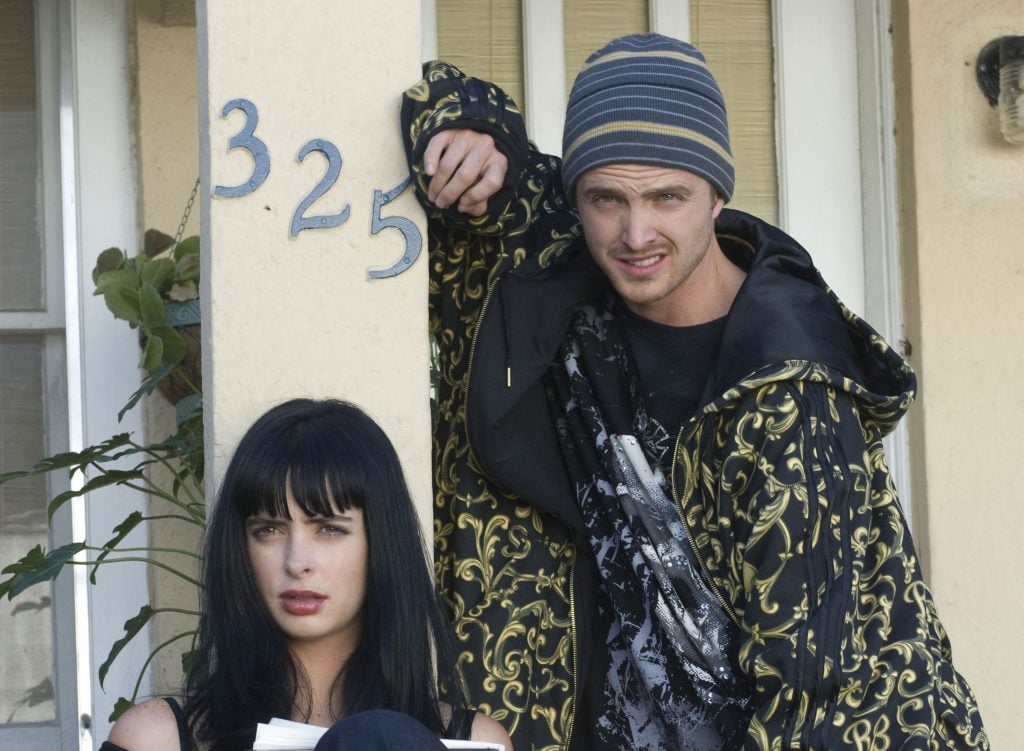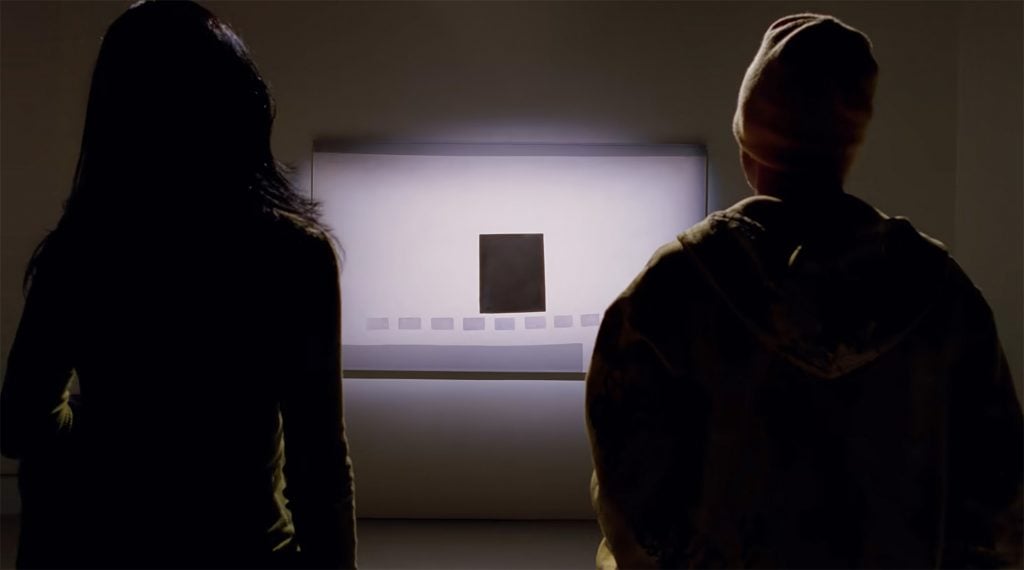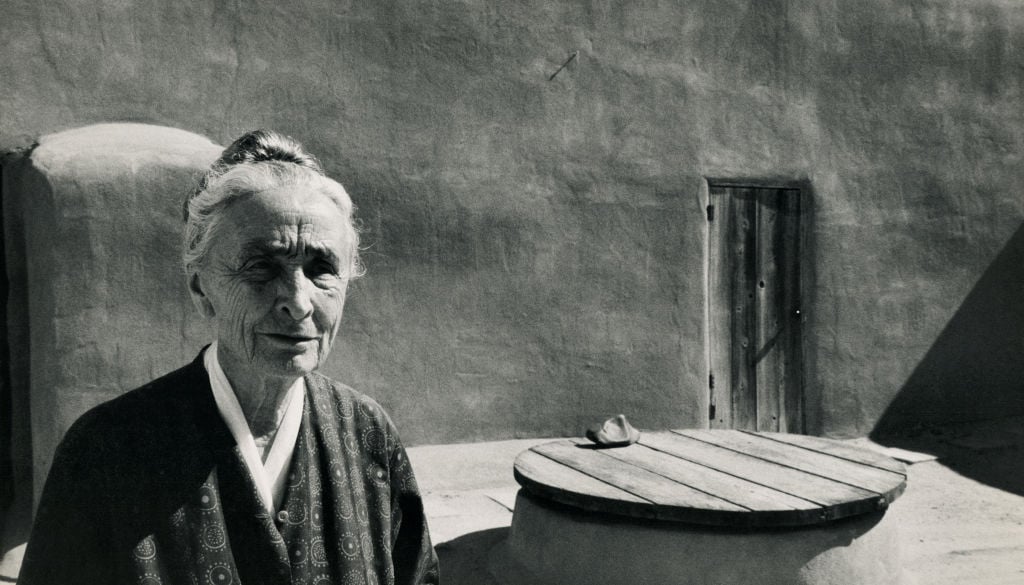Pop Culture
As Seen on ‘Breaking Bad’: Georgia O’Keeffe’s Haunting Painting of a Door
Jesse and Jane head to the Georgia O'Keeffe Museum to ponder the meaning of doing the same thing over and over.

As Seen On explores the paintings and sculptures that have made it to the big and small screens—from a Bond villain’s heisted canvas to the Sopranos’ taste for Renaissance artworks. More than just set decor, these visual works play pivotal roles in on-screen narratives, when not stealing the show.
In the 11th episode of the third season of the hit TV show Breaking Bad, Jesse Pinkman (played by Aaron Paul) visits the Georgia O’Keeffe Museum in Santa Fe, New Mexico, with his girlfriend Jane (Krysten Ritter). It’s Jane’s idea, and the only reason Jesse agrees to go is because she tells him that O’Keeffe had a reputation for painting vaginas.
Correction: painting things that look like vaginas. Like the door of her house and studio in Abiquiu, which is also the episode’s title. Standing in front of O’Keeffe’s My Last Door, created between 1952 and 1954, Jane tells Jesse that O’Keeffe painted this same scene dozens of times, changing only its color and sometimes its composition.
Jane is enamored with O’Keeffe’s work, which she says evokes an “erotic nature.” Jesse, despite his constant horniness, is less impressed. Sitting in his car outside the museum, he asks Jane why O’Keeffe, or anyone for that matter, would do the same thing over and over again. Where’s the fun in that?
Taking a drag from her cigarette, Jane flips the question on its head. Why would anyone do something once and only once? Would you only smoke one cigarette? Have sex only once and never again? Would you only watch only one sunset for the rest of your life?

Krysten Ritter and Aaron Paul in Breaking Bad (2008–13). Photo: Screen grab.
It’s fitting that O’Keeffe should emerge amid Breaking Bad. Like the show, which takes place in Albuquerque, O’Keeffe spent a significant part of her career in New Mexico. Throughout the 1930s, the painter made frequent trips to the region, when she spotted the Abiquiu property. She purchased the space from the Catholic Archdiocese of Santa Fe in 1943, before relocating there permanently in 1946. She would remain in the state until her death in 1986.
New Mexico’s unique animals and landscapes have featured prominently in O’Keeffe’s work, such as Cow’s Skull: Red, White, and Blue (1931). “As soon as I saw it, that was my country,” she once reflected of New Mexico. “I’d never seen anything like it before, but it fitted to me exactly. It’s something that’s in the air, it’s different.”
As Jane informs Jesse, O’Keeffe did indeed paint many variations of the door of her Abiquiu home, which she said was “what made me buy this house.” She created some 20 versions of it. “I’m always trying to paint that door—I never quite get it,” she once said. “It’s a curse—the way I feel I must continually go on with that door.”

Georgia O’Keeffe on the patio of her home, Abiquiú, New Mexico (1971). Photo: Basil Langton/Photo Researchers History/Getty Images.
The actual door at O’Keeffe’s property is nothing exceptional; what is exceptional is her pursuit to capture what she saw in it. Each of her attempts was different, echoing Jane’s assertion that certain things are worth doing more than once because nothing is exactly the same every time.
It’s an idea that might resonate with Jesse, an addict who spent most of his adult life chasing the next high. Or even his partner-in-crime, Walter White (Bryan Cranston), a chemistry teacher turned drug kingpin—his personal transformation a mirror of an iterative scientific process.
“Chemistry is the study of matter, but I prefer to see it as the study of change,” he tells his bored students in the pilot episode. “But that’s all of life, right? It’s the constant, it’s the cycle. It’s solution, dissolution. Just over and over and over. It is growth, then decay, then transformation.”





